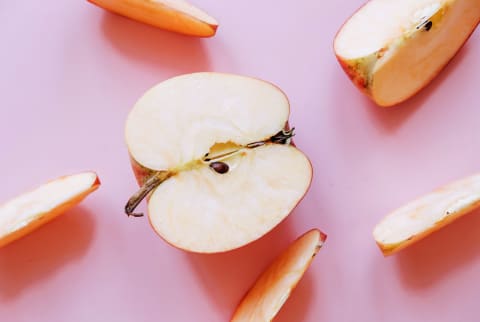Did You Know You Can Easily Make Your Own Apple Cider Vinegar? Here's How


We’re very into apple cider vinegar around here, whether we’re using it to reset our guts, as a detox shot, or to detoxify our homes. While you likely know to look for an apple cider vinegar with the mother for potent therapeutic benefits, you might not know just how easy it is to make your own apple cider vinegar at home. This recipe, excerpted from Ashley English’s Southern From Scratch, takes you through the simple three-ingredient process step-by-step.
“In my own kitchen, I use apple cider vinegar on a near-daily basis,” explains Ashley. “In addition to using the vinegar in cooking, I use it in some housekeeping and beauty remedies, such as a hair rinse for dandruff and a pet odor-eliminating spray.” She recommends using a number of apple varietals rather than sticking to just one type. “By mixing a range of varieties, you’re able to create a more nuanced, complex vinegar than is typically offered when purchased off the shelf.”
Homemade Apple Cider Vinegar Recipe
Makes 6 to 8 cups
Ingredients
- 6 cups water
- ½ cup sugar
- 8 whole organic apples, chopped (leave the peels on and the cores and seeds in, and use a variety of apples)
mindbodygreen Functional Nutrition Training
Learn how to use food as medicine with a cutting-edge nutrition deep dive taught by the world's foremost health & wellness experts. Learn more about mindbodygreen's Functional Nutrition Training.
Method
- Combine the water and sugar in a medium bowl. Stir until the sugar has fully dissolved.
- Place the apples in a large nonreactive pot, ceramic pot, or glass bowl. Pour the sugar water over them. The apples need to be fully covered; if they’re not, make another batch of sugar water and add just until the apples are covered.
- Use a large rubber band to secure a triple layer of butter muslin or fine-weave cheesecloth over the top of the pot or bowl. Place in a dark, warm location (such as a pantry, cupboard, top of the refrigerator, or out-of-the-way countertop) for one week. If a white, cloudy film forms during the fermenting time, that’s fine. If gray, white, green, or other-colored mold or scum forms, your ferment is likely contaminated, and it’s best to compost this batch and begin anew.
- After a week, strain the mash from the liquid using a fine-mesh sieve placed atop a bowl. Leave the mixture to strain, covered with a cloth, for at least 8 to 12 hours. Discard or compost the apple pieces.
- Return the liquid to the container used for fermentation. Replace the cheesecloth or butter muslin, making sure to secure it tightly, and return to the previously used fermenting location.
- Leave the vinegar to ferment for 3 weeks. Begin tasting it then. If it still tastes fruity and not vinegary, leave it for another week. Once the flavor is to your liking, strain it again through a fine-mesh sieve. Store the vinegar in a lidded container at room temperature. It will keep indefinitely.
NOTE: Homemade apple cider vinegar is not safe to use in home canning. The acidity level of vinegar must be 5 percent or greater to be considered safe in home canning; otherwise, it is not properly acidified, and botulism spores can grow, rendering the food unsafe for consumption. Homemade apple cider vinegar levels are highly variable, whereas store-bought offerings are consistently at 5 percent or greater. Use this vinegar in dishes around the kitchen but not for long-term preservation. Alternatively, if you’d like, you can purchase pH strips and test the level of each batch of homemade vinegar you make to see if its level is 5 percent or greater.
Based on excerpts from Southern From Scratch by Ashley English, with the permission of Roost Books, an imprint of Shambhala Publications, Inc. Copyright © 2018.
